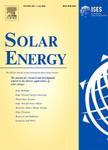版权所有:内蒙古大学图书馆 技术提供:维普资讯• 智图
内蒙古自治区呼和浩特市赛罕区大学西街235号 邮编: 010021

作者机构:Art Univ Isfahan Fac Architecture & Urbanism Esfahan Iran Islamic Azad Univ Dept Architecture Isfahan Khorasgan Branch Esfahan Iran
出 版 物:《SOLAR ENERGY》 (Sol. Energy)
年 卷 期:2025年第285卷
核心收录:
学科分类:0820[工学-石油与天然气工程] 080703[工学-动力机械及工程] 08[工学] 0807[工学-动力工程及工程热物理]
主 题:Slat shape Daylight Energy Consumption Glare Multi-objective Optimization
摘 要:Identifying the most optimal slat shape significantly influences the performance of louver systems in terms of daylighting, glare control, and energy consumption. This is particularly crucial in climates with high levels of solar irradiance, where thermal gain and daylight illumination highly affect buildings and occupants. This study aims to identify the optimal slat shapes for various profile types-flat, single-curvature, and double-curvature-that simultaneously reduce annual energy consumption and enhance annual daylighting and visual comfort performance in fully glazed office buildings. This goal is achieved by employing a multi-objective optimization (MOO) algorithm, NSGA-II, applied to a control-point-based algorithm designed to generate diverse slat shapes for each profile type. The main objective functions include the maximization of spatial useful daylight illuminance (sUDI) and spatial glare autonomy (sGA), as well as the minimization of energy use intensity (EUI). The MOO process results in a diverse set of Pareto optimal slat shapes for each profile type, which are subsequently ranked by a fitness function. Findings suggest that the Pareto optimal solutions within each type significantly improve the overall performance of the space compared to the base case. Specifically, among these solutions, flat profiles with the highest fitness scores enhance daylighting levels of the space to a greater extent (9.028% to 14.583%) compared to single (-2.778% to 12.5%) and double-curvature profiles (-5.556% to 9.722%) with the highest scores. Regarding glare, double-curvature profiles with the highest fitness scores provide a more visually comfortable environment for users by improving the sGA value by 19.879% to 33.247% compared to the base case. However, those with a concave-convex shape produce excessive illumination in the perimeter zone, whereas those with a convex-concave shape present challenges in providing sufficient daylight in the rear zone of the space. Ad